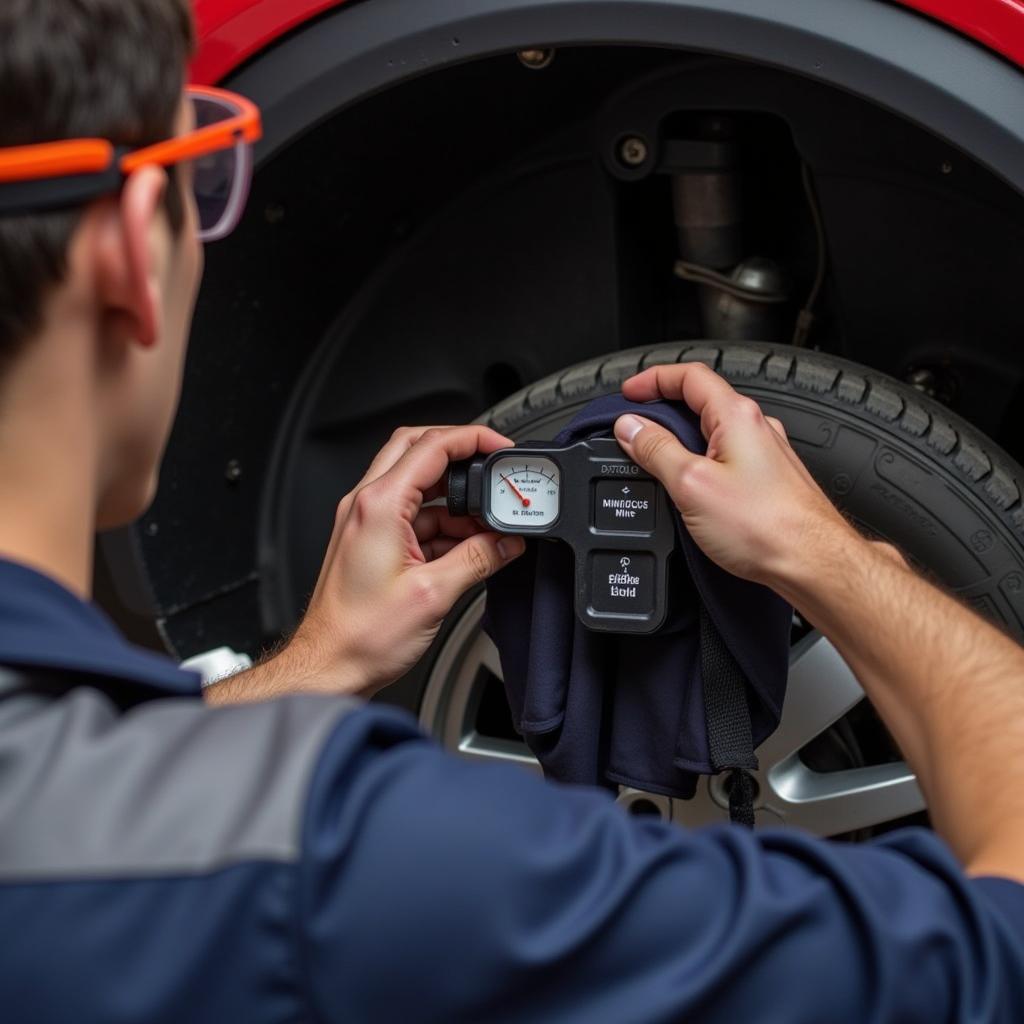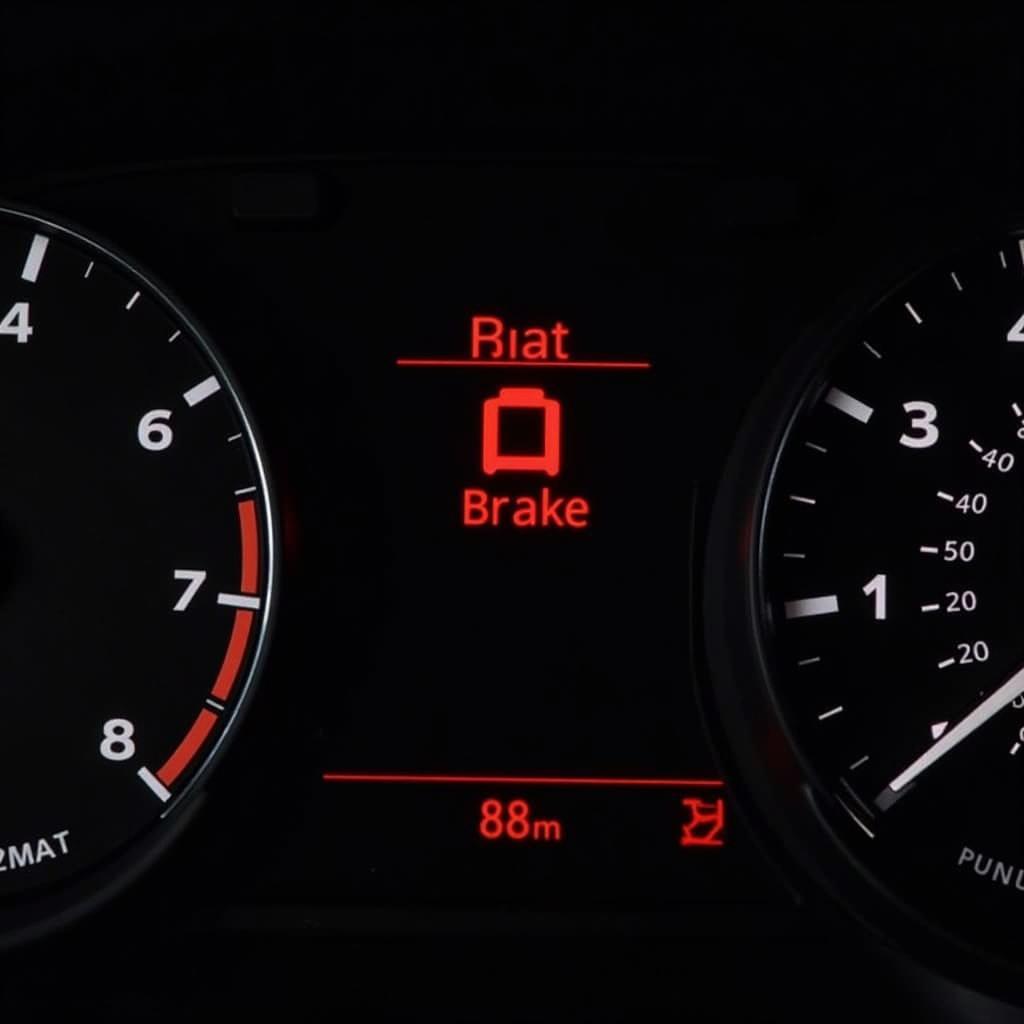The red brake warning lamp on your dashboard is a crucial safety indicator that you should never ignore. When it illuminates, it signals a potential problem with your vehicle’s braking system. Understanding what this warning means and knowing the right course of action can be the difference between a safe stop and a dangerous situation.
What Does the Red Brake Warning Light Mean?
The red brake warning lamp, often accompanied by the word “BRAKE” or an exclamation mark within a circle, can indicate several issues:
- Low Brake Fluid: This is the most common reason for the warning light to activate. Brake fluid is essential for transmitting force from your foot on the brake pedal to the wheels, allowing the vehicle to stop. A leak in the system can cause a drop in fluid level, triggering the warning.
- Parking Brake Engaged: In many vehicles, the red brake warning light will also illuminate if the parking brake is not fully disengaged. While this is less severe than a hydraulic issue, it can still affect braking performance and lead to component wear.
- Brake System Malfunction: A more serious problem, such as a faulty master cylinder, ABS module, or a problem within the hydraulic circuitry, can also activate the warning light. These issues require immediate attention from a qualified mechanic.
What to Do When the Red Brake Warning Lamp Turns On?
If you notice the red brake warning lamp illuminating while driving, it’s crucial to remain calm and take the following steps:
- Safely Pull Over: Find a safe location to pull over as soon as possible. Avoid sudden braking and use your turn signals to alert other drivers.
- Check the Parking Brake: Ensure the parking brake is fully released. If it’s engaged, disengage it and see if the warning light turns off.
- Inspect Brake Fluid Level: If the parking brake is not the issue, carefully check the brake fluid level in the reservoir. Refer to your owner’s manual for the reservoir’s location and instructions.
- Proceed with Caution (If Necessary): If the brake fluid level is adequate and the parking brake is disengaged, but the light remains on, it indicates a potential system malfunction. Drive cautiously to a trusted mechanic, avoiding high speeds and heavy braking.
Important: Driving with a red brake warning light on can be extremely dangerous. If you notice any unusual noises, vibrations, or a change in brake pedal feel along with the warning light, stop driving immediately and have your vehicle towed to a mechanic.
 Mechanic checking car brake fluid level
Mechanic checking car brake fluid level
Remote Diagnostics and Software Solutions for Brake Issues
In today’s technologically advanced automotive landscape, remote diagnostics and software solutions play a significant role in identifying and addressing brake system problems. As a specialist in automotive electrical engineering, I utilize advanced diagnostic tools to remotely access a vehicle’s onboard computer system. This allows me to:
- Read and analyze fault codes: Retrieve Diagnostic Trouble Codes (DTCs) stored in the vehicle’s computer, providing specific insights into the nature of the brake system issue.
- Monitor real-time data: Access live sensor data from the ABS module, wheel speed sensors, brake pressure sensors, and other components to pinpoint the root cause of the problem.
- Perform software updates and calibrations: Remotely install software updates or perform calibrations for the Electronic Brake Control Module (EBCM) or ABS module, potentially resolving software-related issues.
Conclusion
The red brake warning lamp should never be ignored. Understanding its meaning and taking appropriate action can prevent accidents and ensure your safety on the road. While checking the parking brake and brake fluid level are good first steps, seeking professional help is crucial for diagnosing and addressing complex brake system issues. Remember, your safety is paramount, and a properly functioning braking system is non-negotiable.


